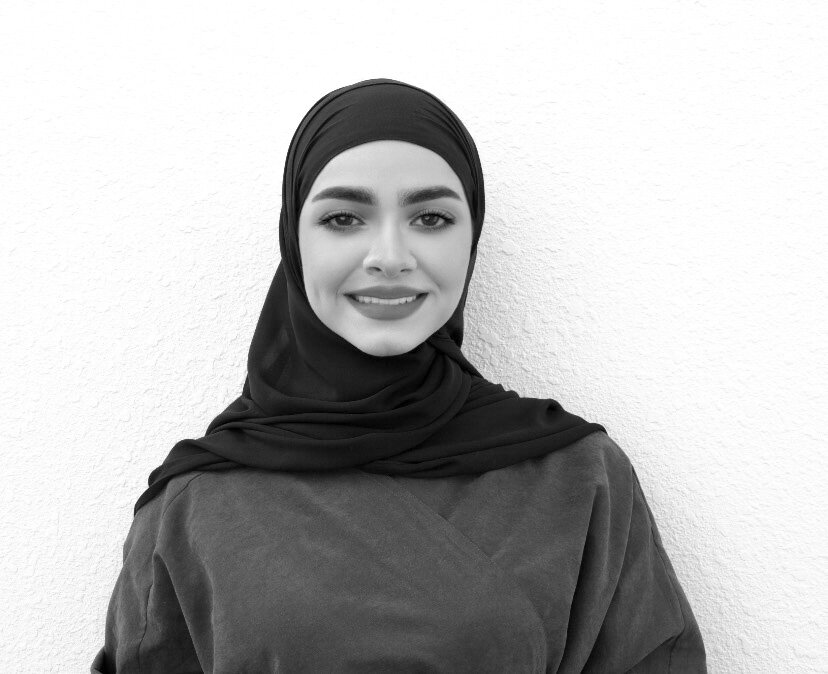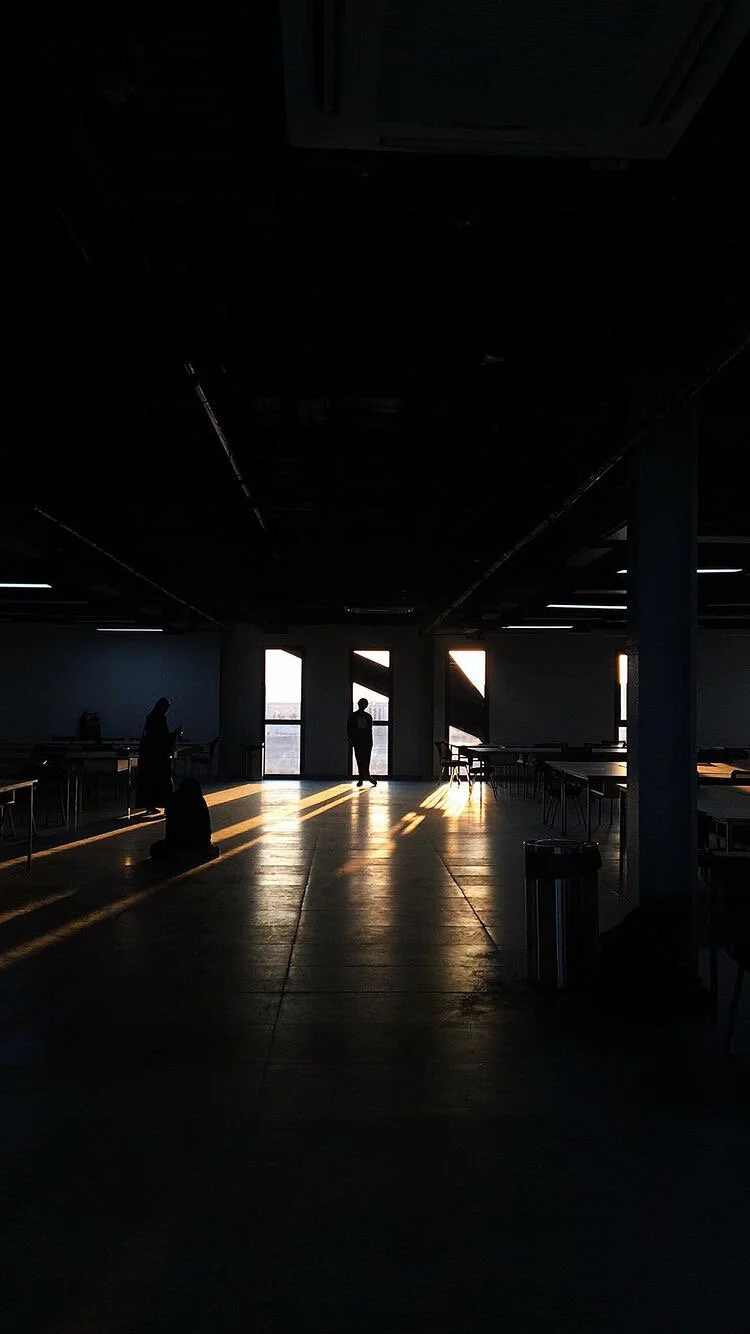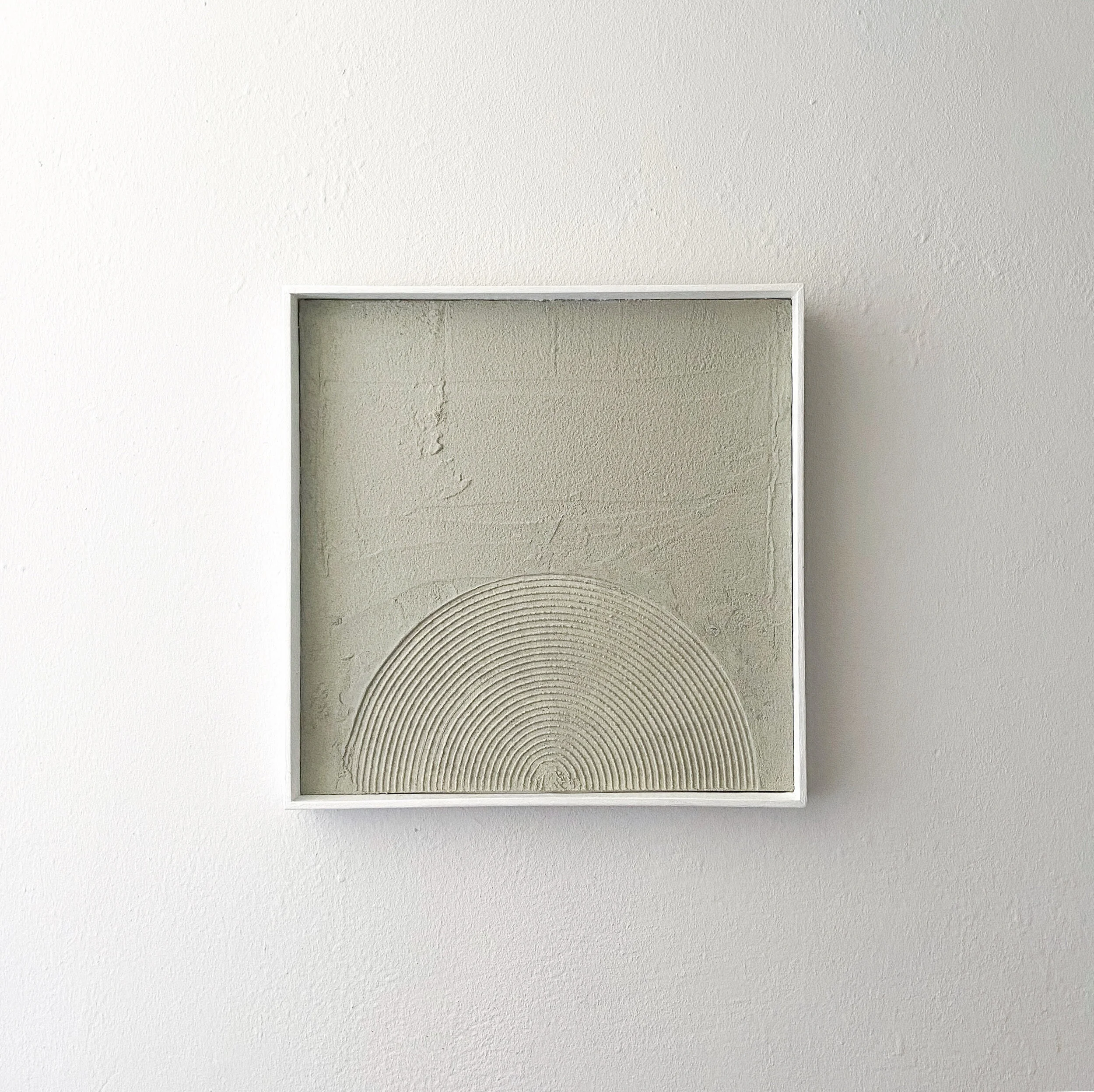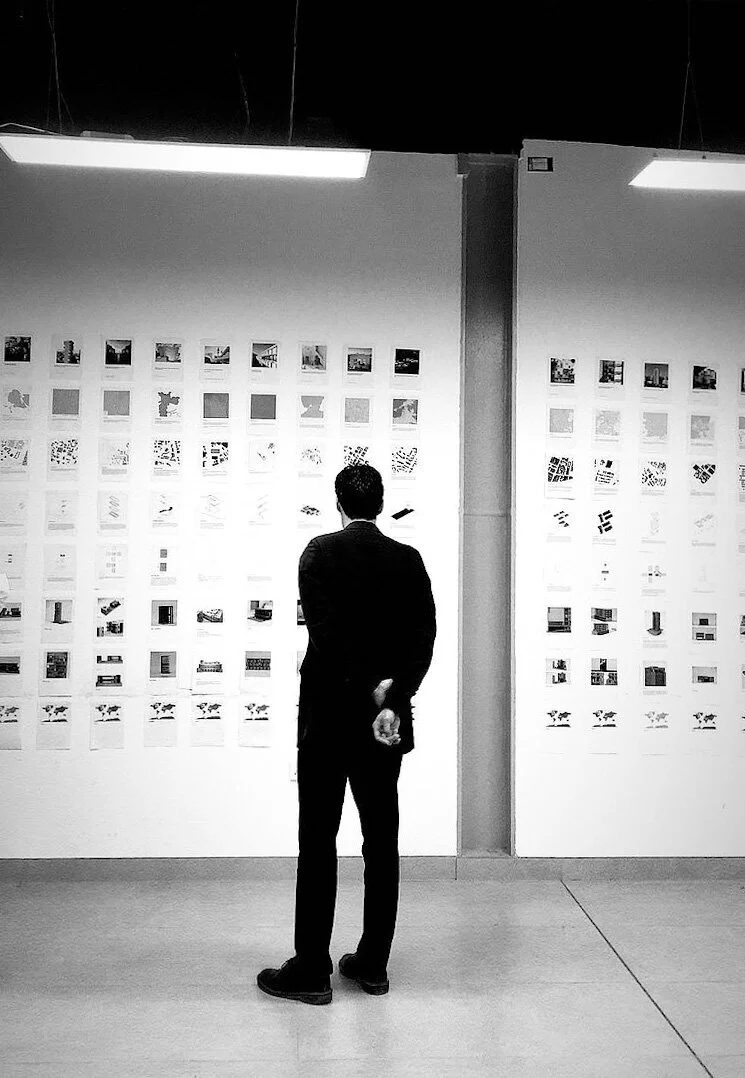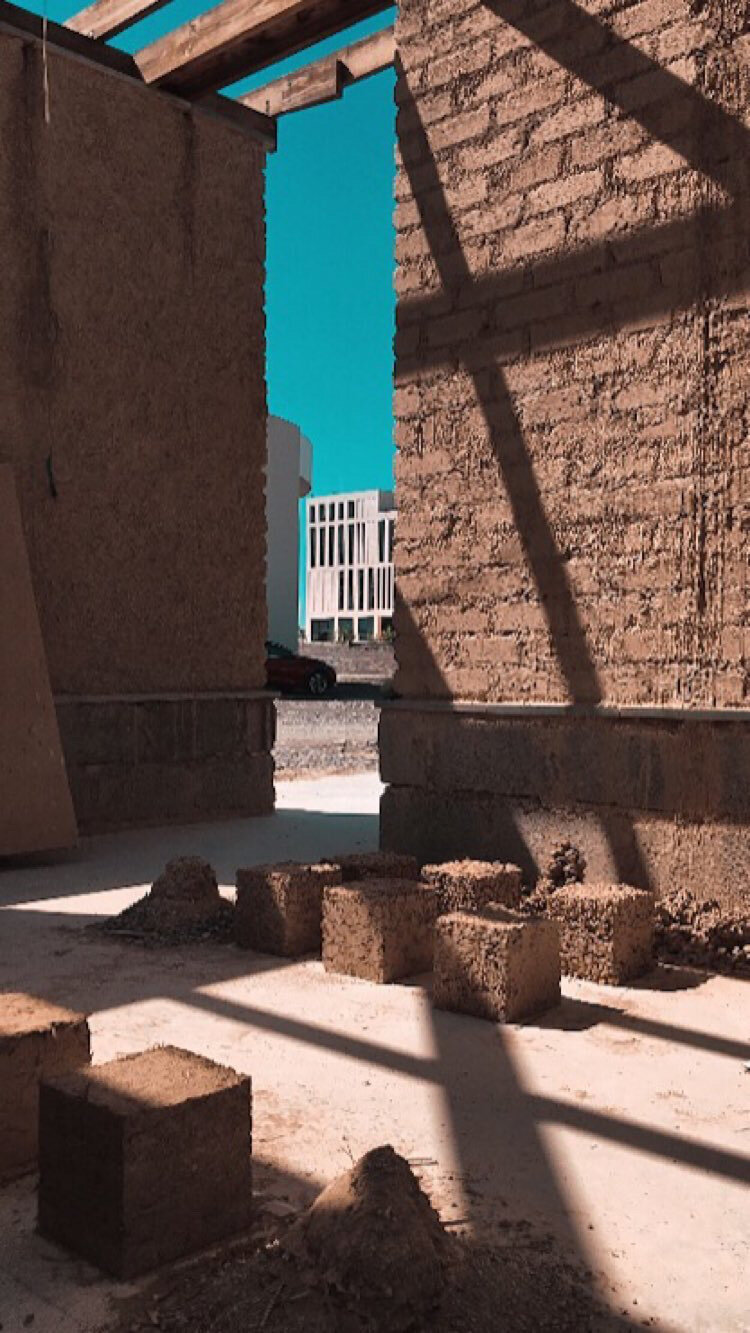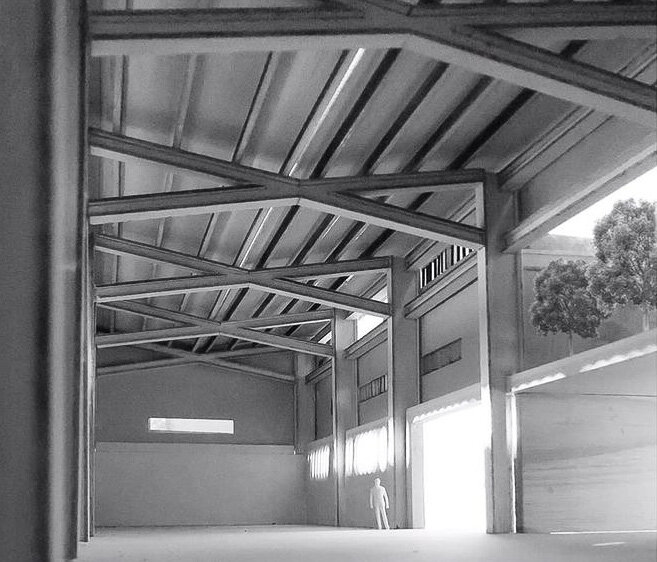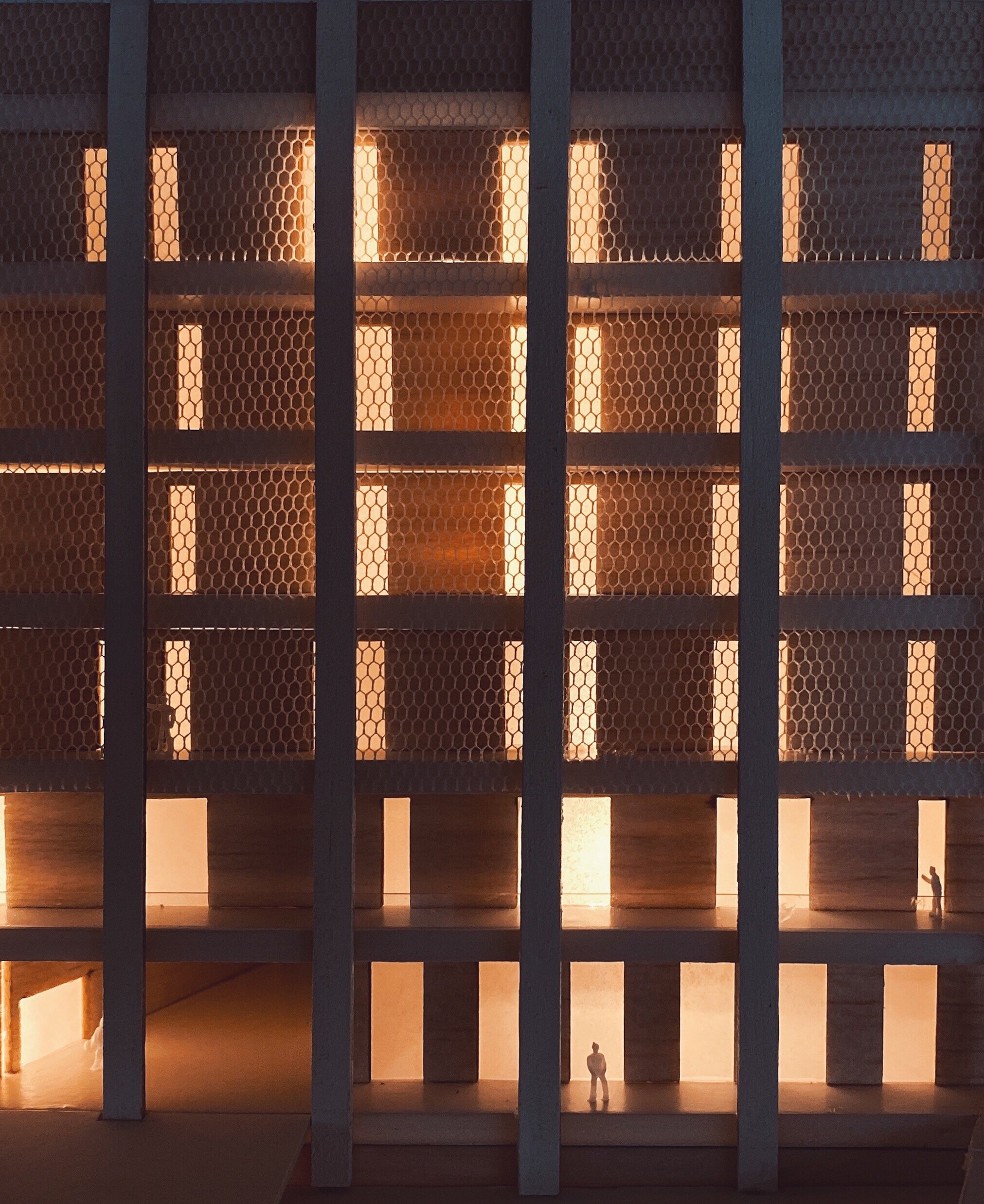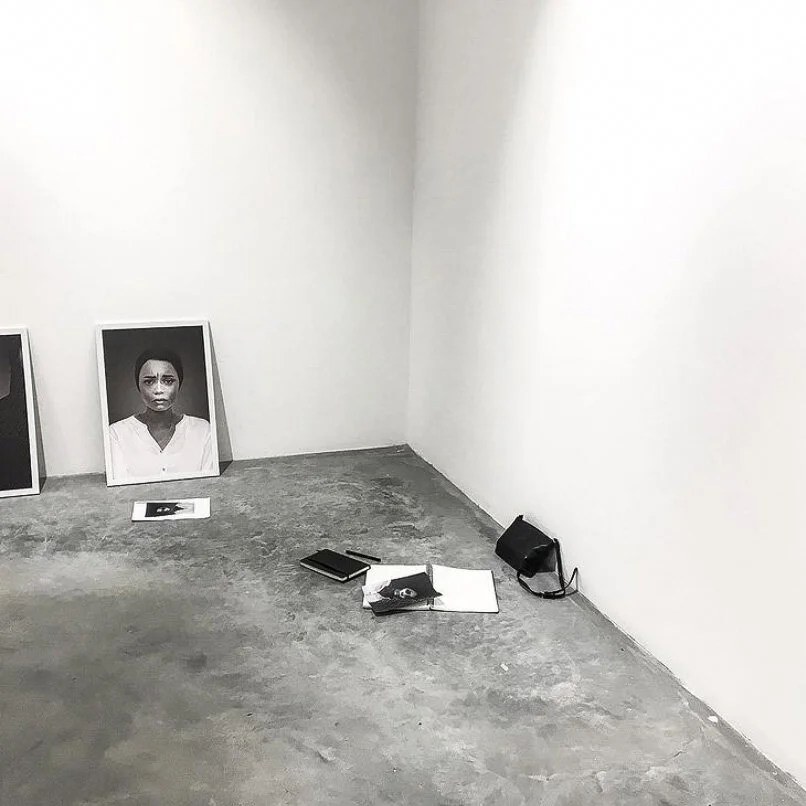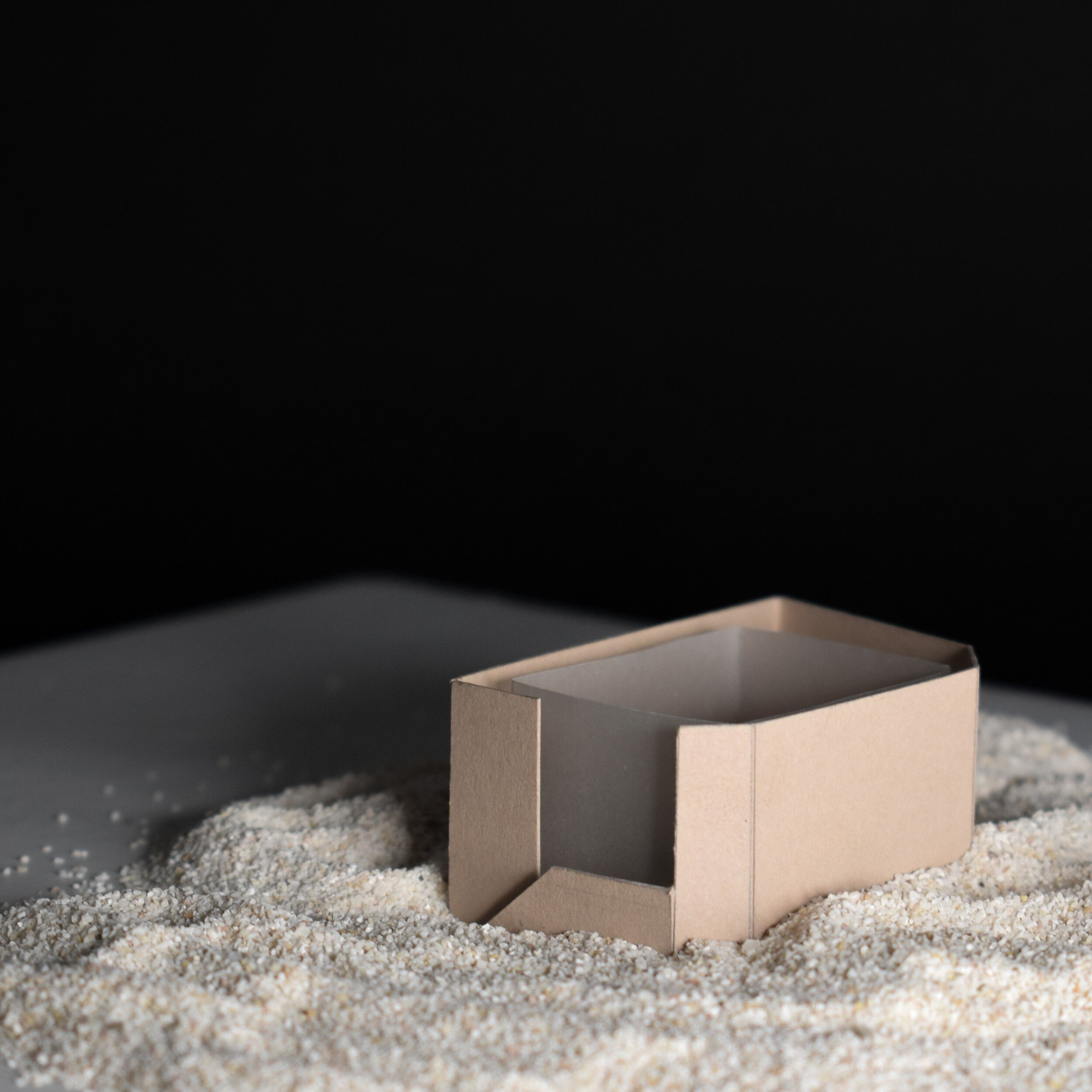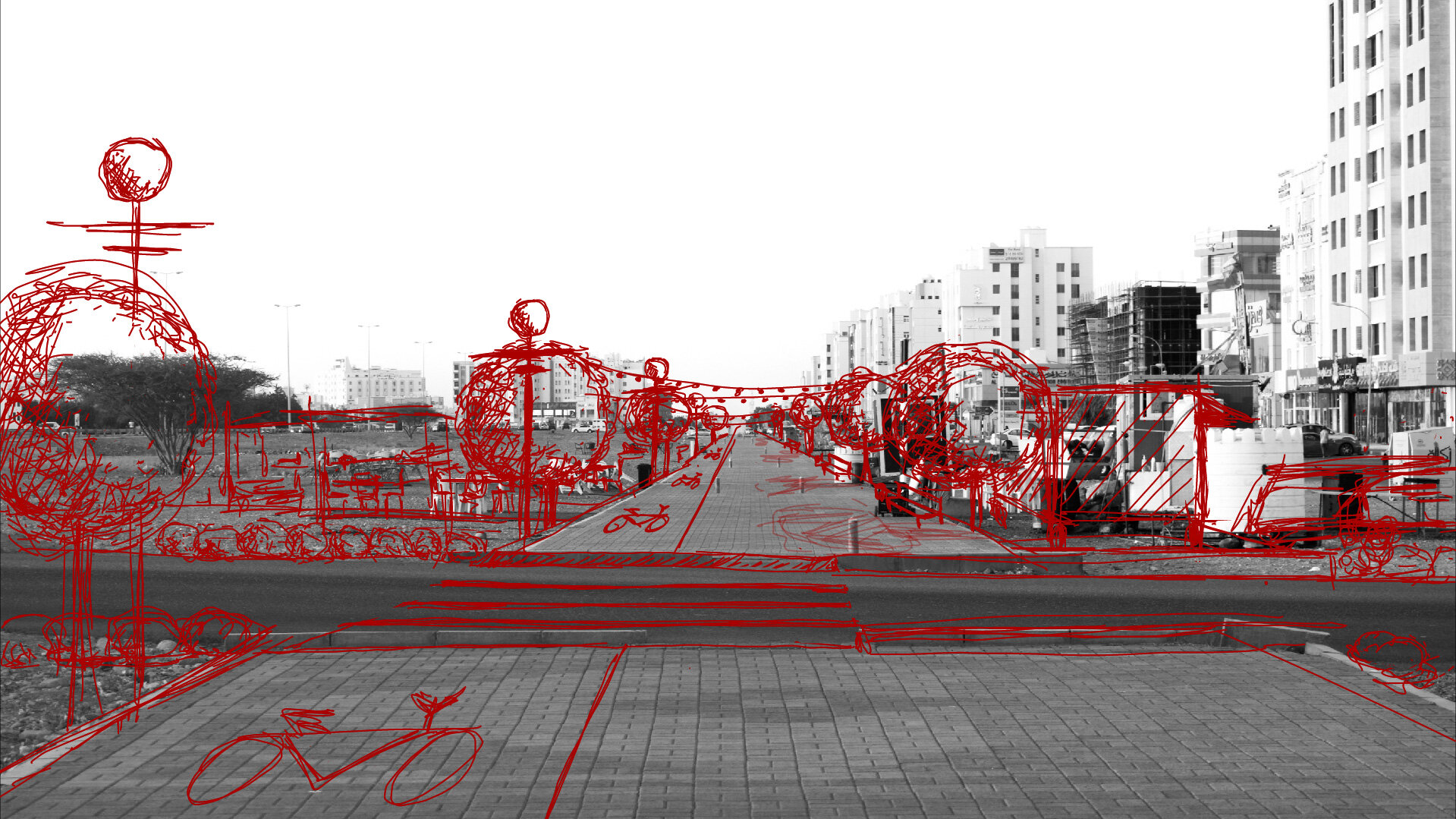AYA YOUSUF
Portrait courtesy of Aya Yousef.
Aya Yousuf is an aspiring Omani/American Urban Planner and Architectural Designer born and raised in Oman. She is currently in her fourth year of the Bachelor of Urban Planning and Architectural Design studies at German University of Technology in Oman (GUtech) and is working on her thesis design project on design strategies for public places in multi-cultural communities around and between multi-story buildings in Oman. She is also a passionate emerging artist and designer, a member of the Omani artist community, and has worked in the field of interior design, graphic design, product design, and others.
Along with her passion for enhancing the quality of life in Oman, which impacts human behavior and health through designing and redesigning outdoor public spaces and well- thought indoor/outdoor architectural spaces, she also has a strong connection to earthen and natural raw materials, whether by using earthen materials in her architectural designs or in her art by creating her own natural earthen paints and textures. She also enjoys architectural model making.
Golden hour at the UPAD studios.
Aya has many achievements despite her young age. Her most admirable achievements are being part of the Stal Gallery YEAP 2017, presenting one of her architectural designs during the EBI (Earthen Building Initiative) symposium in 2020 at her university, and artwork in a national art competition. She is also a research assistant at her university and is part of the Where Oman Walks Initiative team: a project led by professionals in GUTech with the objective of improving the quality of public places in neighborhoods through collaborative design approaches in Oman.
Aya is ardent about creating high-quality, vibrant, inclusive, and active places to live in or experience, whether on a smaller scale like architecture or a larger scale like urban spaces. She is also devoted to bringing subtle beauty to life through her artwork.
Standing Loud in a Male-Dominated Society
Where are you from?
Omani and American; born, raised and living in the Sultanate of Oman.
What is your favorite dish?
Sushi (and ice cream…is that even considered to be a dish?)
Three additional fun facts about Aya
I speak Arabic like an Omani and I speak English like an American, and I don’t have a mixed accent in either language, which confuses people a lot about where I’m from.
I’m the middle child of 7. This family size is abnormal for an American family but very normal for an Omani family.
My dream in life, when I was young, was to be a shepherd and raise sheep. Now I’m not an animal person at all.
Light, texture, and form experimentation.
What inspired you to study architecture?
I have always loved art, being creative, making things with my hands, and drawing buildings. I would admire how buildings looked and then sketch them onto paper. On the other hand, I also really loved science in school. Out of all the majors I could find as an option, Urban Planning and Architectural Design was a perfect mix between my artistic and creative side and my scientific side. In my opinion, architecture is the perfect balance between art and science.
The first Where Oman Walks public exhibition in Bait Al Barandah museum.
Ironically, I did not even consider architecture as a career option initially, and instead, I was drawn more towards the medical field--specifically physiotherapy--until I visited the National Museum in Oman in 2015, which had models of historical buildings on display. I was mesmerized by them. I thought: I want to do this; I want to study a major in which I can make models and design buildings. Little did I know that in addition to making models and designing buildings, I would be designing and planning a life in physical and non-physical spaces. I would be studying behavior and health. I would have the opportunity to change a life or bring life to space.
Name a woman architect (preferably Arab or MENA) who most influenced you as an emerging professional? Why or how did they?
Zaha Hadid. Zaha Hadid was and is still the superwoman of architects to me. She will always be a mentor and a teacher. She was such a powerful woman, such a powerful designer, and such an inspirational architect living in a man’s world where architecture was considered not to be a profession female-led. Her ability to challenge the norms and tradition through her being an Arab woman architect as well her outspoken fluid designs in architecture is what drew me the most in becoming a student of her school of thought. Her designs often didn’t follow the rules and yet they are massive, beautiful, functioning art sculptures. She said, “Architecture is really about well-being. I think that people want to feel good in a space…On one hand, it’s about shelter, but it’s also about pleasure.” Ever since I read this quote, I took it as a lesson in all my designs throughout my studies. She influenced me to challenge the norms. To design spaces that are functional yet bring pleasure and excitement to the users. To break the rules sometimes and not restrict me when it comes to design. To create livable art through architecture, interior, exterior, and urban design. And most importantly, to believe in the power of creativity and capability that I have as a woman architect.
Al Amerat, an art piece made using local earth. Play of light and shadow.
Name a favorite project completed by a Woman Architect (preferably Arab or MENA). Why is it your favorite?
Discussion wall for an architecture analysis course.
The Heydar Aliyev Center in Baku, Azerbaijan. Designed by Zaha Hadid, this building is probably one of my personal favorite projects by her. I find it very interesting and intriguing how it stands out and breaks from the surrounding traditional Soviet architecture in Baku and reveals a beautifully smooth, dynamic, living art piece. The fluidity of the exterior and interior of the building as well as how it merges with the thoughtfully designed and so beautifully executed urban spaces surrounding it is extremely successful. Every part of this center breathes, from the walls to the ceilings to the exterior facade. I see it as an interactive public space.
Are there any organizations that helped you grow in architecture? How did they help you grow?
The German University of Technology helped me the most in my architectural growth, not only by being an educational institution with the goal of the students learning, giving, and receiving through lectures and assignments but also through the overall atmosphere of the university that encourages creativity and expression without boundaries. Education at GUTech encourages practical practice and experimentation, which I find important in the field of architecture. The AIA Middle East also has helped me through their occasional online webinars as well as PPS placemaking.
The photo was taken during the winner announcement ceremony in the Tilal Al Irfan national art competition.
What is your favorite memory in architecture school or work? Why?
My favorite memory is the long hours in the UPAD studios with my fellow classmates and friends. As tough and stressful as most days may have been, we were all in it together and tried our best to have fun while working. We became a family, and we would even see each other more than we would see our families at home. The liveliness of the studios created a very motivational environment for studying, working, and spending time. We would all sit together, help each other, and consult with each other about our design approaches no matter what year we were in and what subject we were taking. So many hilarious and beautiful memories were created in the studios and with my classmates and friends.
Apartment building design: 1:50 rendered wall section detail.
If you were able to talk to your younger self, what would you say?
Follow your natural abilities. Reflect on the abilities you had when you were a little child with a lot of free time and follow that path. Sometimes time, school, and adulthood will drift you off your path and put what you used to really enjoy doing on the back shelf, but do what you used to do when all you had was time to have fun and get creative. It was always what you liked to do and enjoyed doing. Don’t hesitate in making that part of your professional career when you grow older. The major you choose will reinspire what you enjoyed doing. It will reawaken all your creative abilities while enjoying it. Choose a major not only because you find it interesting and hope it will benefit you financially, but also because you will enjoy studying and working in it for the rest of your professional life. It is extremely important to like what you do because it will open up so many doors and opportunities in your life and you will always be growing and giving.
What would you want to say to the next generation of aspiring Arab women architects?
Don’t be afraid to stand out in your personality, in your abilities, in your intelligence and ideas, and in your uniqueness just because you are in a male-dominated field in a male-dominated society. Don’t let that push you to the back of the crowd.
At some point, you might have to break some barriers but don’t crash through them. Figure out what you need to do and stay strong about it while staying respectful. Architecture is not an individual field and you will always be working with other people and teams. Don’t be afraid to lean on others and learn from others when you are in need. Architecture is also a very competitive field, but don’t let yourself be aggressive and arrogant. Allow other people to help you with your ideas and their ideas.
Always take humans, culture, and climate into consideration when designing anything and explore a lot. Explore architecture. Explore methods. Explore theories and history. Explore nature. Explore human behavior.
Transitioning from urban design to architecture: rendered site plan.
In terms of rising concerns and problems (in the architectural profession) over the past year, what is one change that you wish saw would happen and still did not?
Although in Oman and the Arab world it is more likely that the majority of architecture students and graduates of architecture school are females, it is still seen as a profession for males. Since we’re living in a male-dominated society and architecture is a field that is also more likely to be recognized as a male-dominated field by Arabs, designs receive praise and attention more often when they are the work of male architects. Also, clients usually trust the work of male architects over female architects although both genders may be highly trained and experienced in the field. Women architects’ capabilities of designing in the architectural professions are still, up to this day, doubted and are not taken as seriously as that of men in both educational and work atmospheres. I really hope that female capabilities of design and execution will soon be equally respected and recognized in Arab societies.
A collection of old photos of my grandmother.


